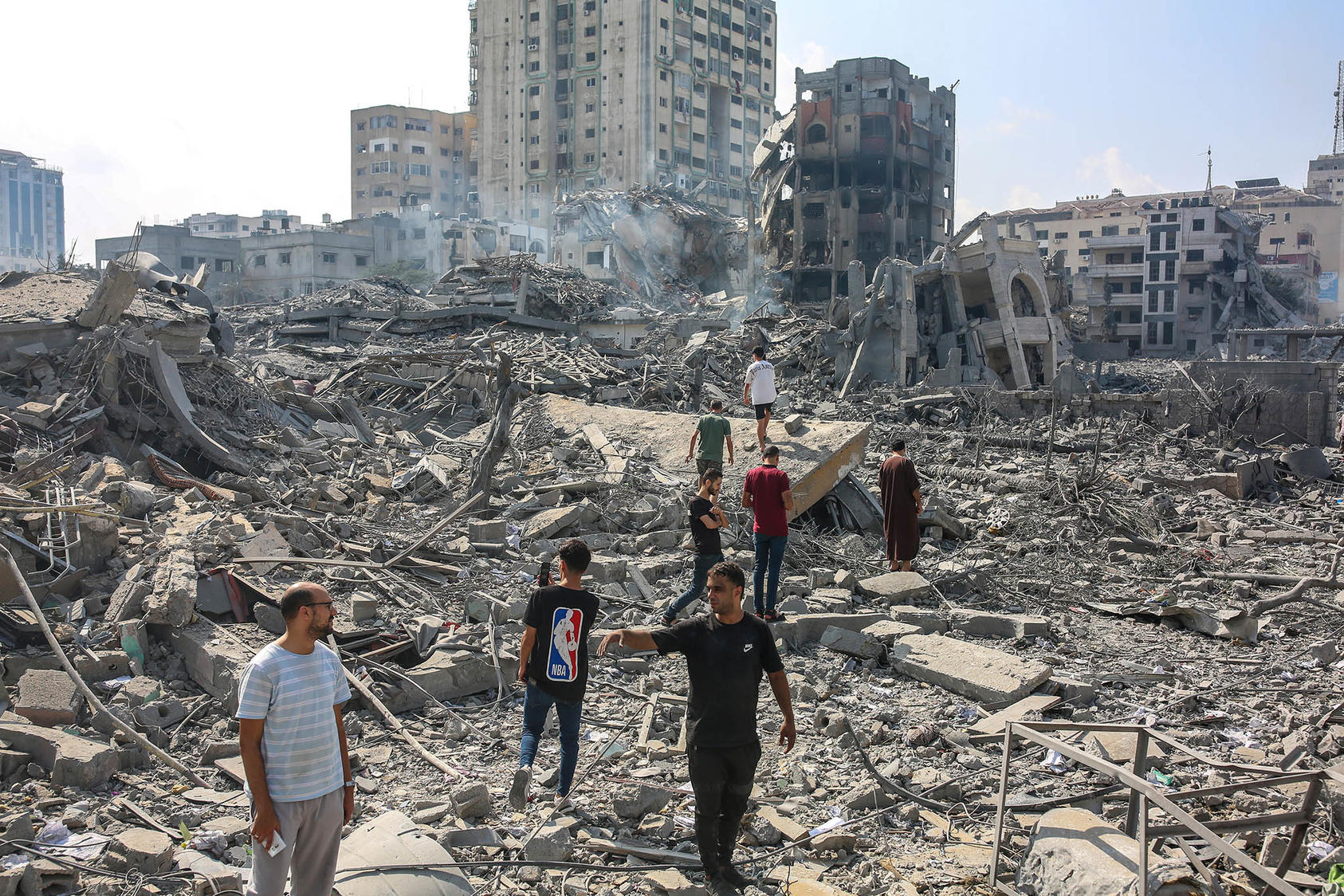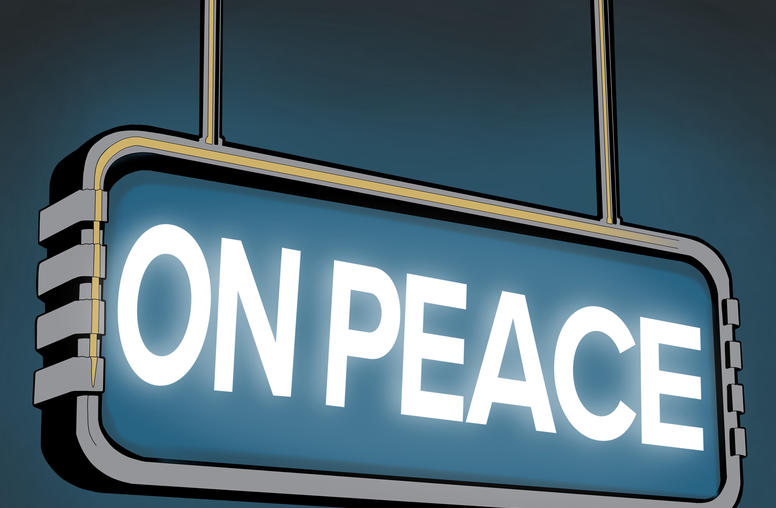Plan for Gaza’s Future Highlights the Challenges That Lie Ahead
A key challenge will be bridging the gulf between Israeli and U.S. positions.
The document that Israeli Prime Minister Benjamin Netanyahu presented to his security cabinet for discussion on February 22 may be his first formal articulation of a postwar plan for Gaza, but is largely a compilation of views that have been expressed publicly over the past few months. Accordingly, it offers few surprises, but could deepen tensions between Israel on one side and the United States and regional stakeholders on the other.

In less than two pages of stipulations divided among immediate, intermediate and longer-term security and civil affairs imperatives, the document, titled “The Day After Hamas,” lays out a vision in which Israel pursues the war until it has achieved its objectives of destroying the governing and military capabilities of Hamas and Palestinian Islamic Jihad (PIJ) — the planners and primary perpetrators of the October 7 attack on Israel; securing the return of Israeli hostages abducted during that attack; and preventing any long-term security threats from Gaza.
From there, the document outlines a set of principles through which Israel, for as long as the “security need dictates,” will have “security control over the entire area west of Jordan,” including of a fully demilitarized Gaza; maintain a security buffer zone alongside the Palestinian side of the border; and implement a closure of the Egyptian-Gaza border.
Posited as a prerequisite, alongside demilitarization, for reconstruction to proceed, the principles spell out the need to advance a plan for the “deradicalization” of religious, educational and welfare institutions, undertaken “as much as possible with the involvement and assistance of Arab countries that have experience promoting deradicalization in their own territory.” With minimal detail given to matters of governance in a postwar Gaza, the principles provide simply for “local elements” with administrative experience to take on civil affairs.
The document also calls for a complete closure of the primary aid agency in Gaza, the United Nations Relief and Works Agency for Palestine Refugees in the Near East (UNRWA), and envisions the agency’s role being assumed by other international aid organizations that were not specified.
Last but not least, the plan rejects any “international dictates” regarding a permanent settlement with the Palestinians, or unilateral recognition of a Palestinian state, noting that any political settlement must be reached through bilateral negotiations between the parties without preconditions.
Bottom line: the document is clearest when it comes to articulating what won’t work for Israel in the wake of October 7, but offers little specificity as to what an acceptable longer-term vision might look like and when it might begin to take form.
The Potential for Deepening Tensions with the United States
The inclusion of certain explicit details, alongside the absence of others, will impact and may deepen growing tensions between the Israeli and U.S. administrations, as well as between Israel and other key stakeholders envisioned to be instrumental in the postwar picture, and who have been clear about positions that the principles outlined in the document either directly contradict or ignore.
We can go back to November 2023, when U.S. Secretary of State Antony Blinken met with G7 counterparts in Japan and articulated what subsequently came to be referred to as his “Tokyo Principles” in relation to postwar Gaza considerations. These were later articulated by the Biden administration as a set of “noes” and “yeses.” Noes to forcible displacement of Palestinians from Gaza, reoccupation of Gaza after the conflict ends, any reduction in territory, use of Gaza as a platform for terrorism or violent attacks and any blockade or besiegement of the enclave. The affirmative principles include that Gaza and the West Bank must return to unified governance under a “revitalized Palestinian Authority”; Israel must be secure from threats; support and resources should be furnished for the “post-crisis” and transitional period, laying the foundation for a pathway to two states; and that a mechanism for reconstruction must be established to address the long-term needs of Gaza.
Key Differences
Juxtaposing the two sets of principles, a picture emerges of a shared goal of an Israel secure from violent threats and terror from Gaza, with diametrically opposed views of how one gets there and, relatedly, at what cost to the security of Palestinians. More broadly, for both the U.S. administration and Israel, the October 7 attack and ensuing war have served as a defining wake-up call that there can be no return to the status quo ante of October 6. However, there is a gulf of difference in how both parties interpret and conceptualize what needs to change.
Most directly, the reference in the prime minister’s plan to an indefinite security presence and a security buffer zone on the Palestinian side of the Gaza perimeter runs counter to the U.S. position regarding no reoccupation or reduction in territory. Contrary to prior explicit rejections of a Palestinian Authority role in Gaza, the principles document does not affirmatively rule out the possibility, but its prescription for “local elements” minimally skirts the issue. In a similar vein, the document does not explicitly reject a Palestinian state potentially emerging through a negotiated path to a political endgame on which it insists. But, juxtaposed with the language on indefinite security control over “all territory west of Jordan,” it underscores the width and depth of the gap with the U.S. administration on the question of defining a political horizon for resolving the broader conflict.
The document also stakes out known grounds of contention between Israel and regional actors who are directly impacted by the war and/or will be indispensable to the recovery, stabilization and longer-term diplomatic pathway toward ending the conflict. The stipulations regarding a closure of the Egypt-Gaza border, and a buffer zone, double down on a simmering point of contention between Israel and Egypt. It is one that strikes at the heart of the latter’s sovereignty and which Egyptian officials have previously stated would “pose a grave threat to Egyptian-Israeli relations.”
To Israel, the October 7 attack points to a problem of weapons and ammunition smuggling into Gaza through Egyptian territory. Egypt has pushed back on that accusation, defending and describing its measures to secure the borders, and noting that Israeli control of the area would constitute a violation of existing agreements. This is playing out as all eyes remain on the potential for an Israeli ground offensive on Rafah, an operation that Israeli officials say is necessary in order to defeat the last primary stronghold of Hamas, and that the Biden administration has said should not proceed unless Israel has a “credible and executable plan for ensuring the safety of and support for the civilians in Rafah.” Egypt, further concerned that such an operation would push Gazan refugees across the border, has indicated that there could be implications for the peace treaty. Egypt’s foreign minister, Sameh Shoukry, noted that it will continue to respect the peace agreement with Israel, but as long as it remains reciprocal.
Negotiating a Truce
It is in this context that another push for a pause in the fighting and eventual permanent cease-fire is gaining momentum. Beginning in Paris last weekend, with follow-up talks in Doha, mediators are continuing to work to secure a likely phased agreement, the basis of which Egypt proposed two months ago, but to date has failed to get traction as Israel and Hamas have rejected each other’s terms.
Pressure has been mounting to see an agreement in place between Israel and Hamas before the start of the Muslim holy month of Ramadan next month. While the U.S. administration issued its third veto of a United Nations Security Council resolution for a cease-fire last week, it submitted its own draft resolution calling for a temporary cease-fire once a deal is reached on returning the hostages and reiterating its opposition to a proposed Rafah ground offensive without accounting for civilian protection.
The challenges cannot be underestimated, with ongoing reports of divides between the Gaza-based and internal Hamas leadership over the terms of an agreement with Israel, and divisions within Israel’s government over how to proceed. The Israeli prime minister has insisted that the Rafah operation will happen eventually, even if delayed by a truce. However, concerns over the conflict-widening potential of the war persisting through Ramadan undoubtedly provide an incentive to the parties and the mediators to push toward a deal.
Mounting U.S. frustration with the absence of the Israeli government’s postwar strategy undoubtedly pushed the prime minister to put forward the “Day After Hamas” document. However, issued on the eve of a return to truce talks in Paris, it is also possible that the growing prospect of a truce agreement played a contributing role. Articulating certain positions on security and related to the political horizon may serve as assurances to some in Israel who may be wary of a deal they could view as a capitulation to Hamas. Indeed, the line in the principles document that international recognition of a Palestinian state would constitute “a huge prize to terrorism” is a sentiment that resonates broadly in Israeli society in the wake of October 7, including among those who would have previously identified as two-state supporters.
This reality underscores the challenges that loom for any U.S. administration effort to seize upon a potential truce agreement to pursue its stated goals of pursuing reconstruction and laying a pathway to two states. Regional actors, such as the United Arab Emirates, upon whom Israel may be relying for the partnered deradicalization agenda it suggests in the principles document, as well as for contributions to reconstruction, have been persistent in their statements that there “must be irreversible progress toward a two-state solution” in order for there to be a regional commitment to Gaza’s reconstruction. Saudi Arabia has also made it clear that it remains interested in an agreement to normalize ties with Israel that seemed in potentia on October 6, but that any deal “must lead to the creation of a Palestinian state.”
While lack of specificity is a shared feature of the prime minister’s principles document, as well as the Emirati and Saudi statements, thereby leaving some wiggle room for all concerned, the articulated positions still represent divides requiring great distance, creativity and political will to bridge. No less in question is the political will of Palestinian President Mahmoud Abbas to engage constructively with the United States toward the latter’s vision of a “revitalized Palestinian Authority.” Palestinian Prime Minister Mohammed Shtayyeh’s acceptance of the Russian invitation to unity talks with all Palestinian factions, including Hamas, in Moscow this week highlight the challenges, even as he has offered the resignation of his cabinet — a move that could signal a step toward the “revitalization” of the Palestinian Authority being sought by the United States and its Arab allies.
The U.S. administration’s ability to progress toward its stated goals will hinge on its ability to square these circles of conflicting public positions and identify avenues to reconcile overlapping interests. It’s a diplomatic substance and sequencing challenge par excellence, for which consummation of the truce deal taking shape will serve as a necessary first step.



